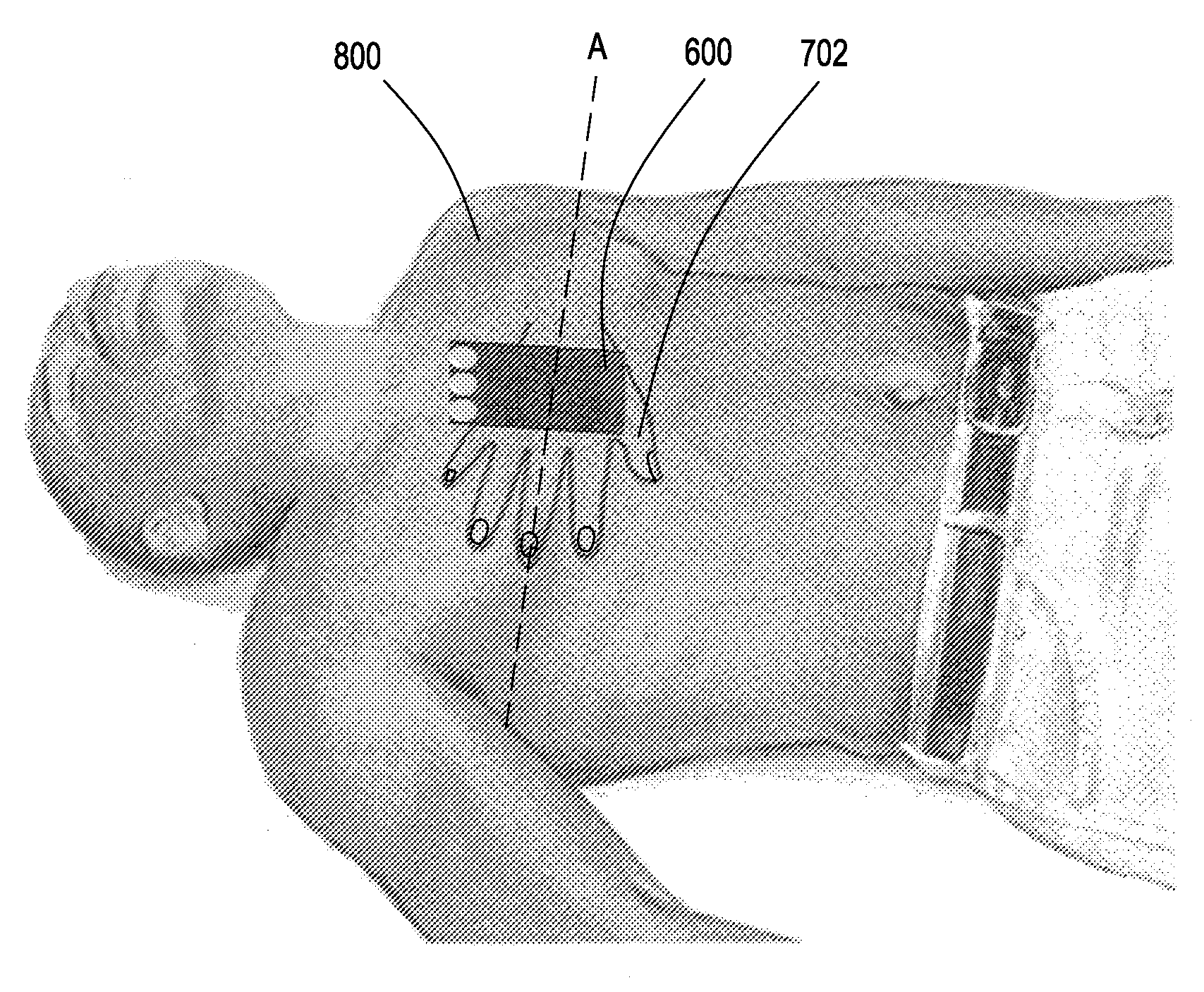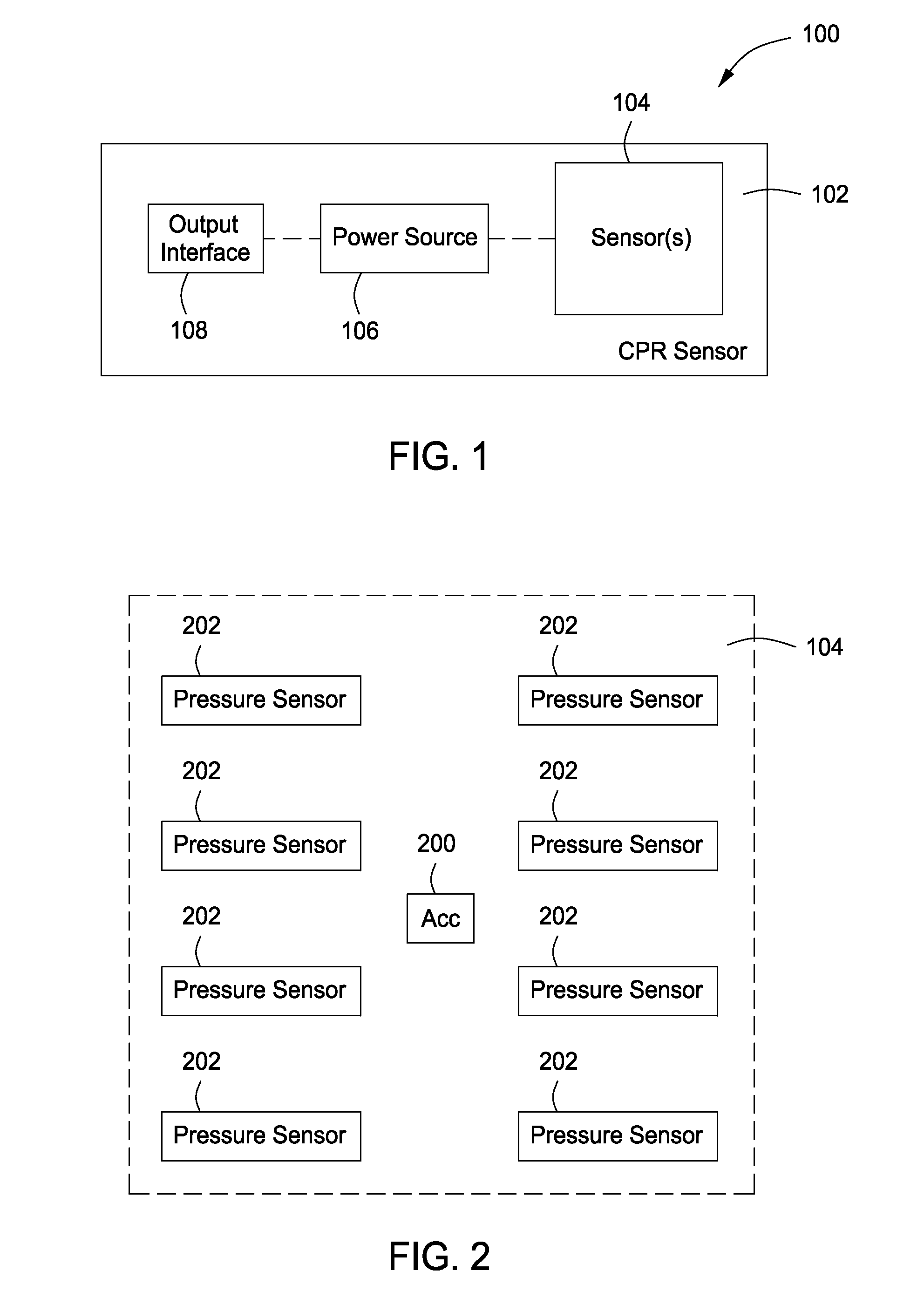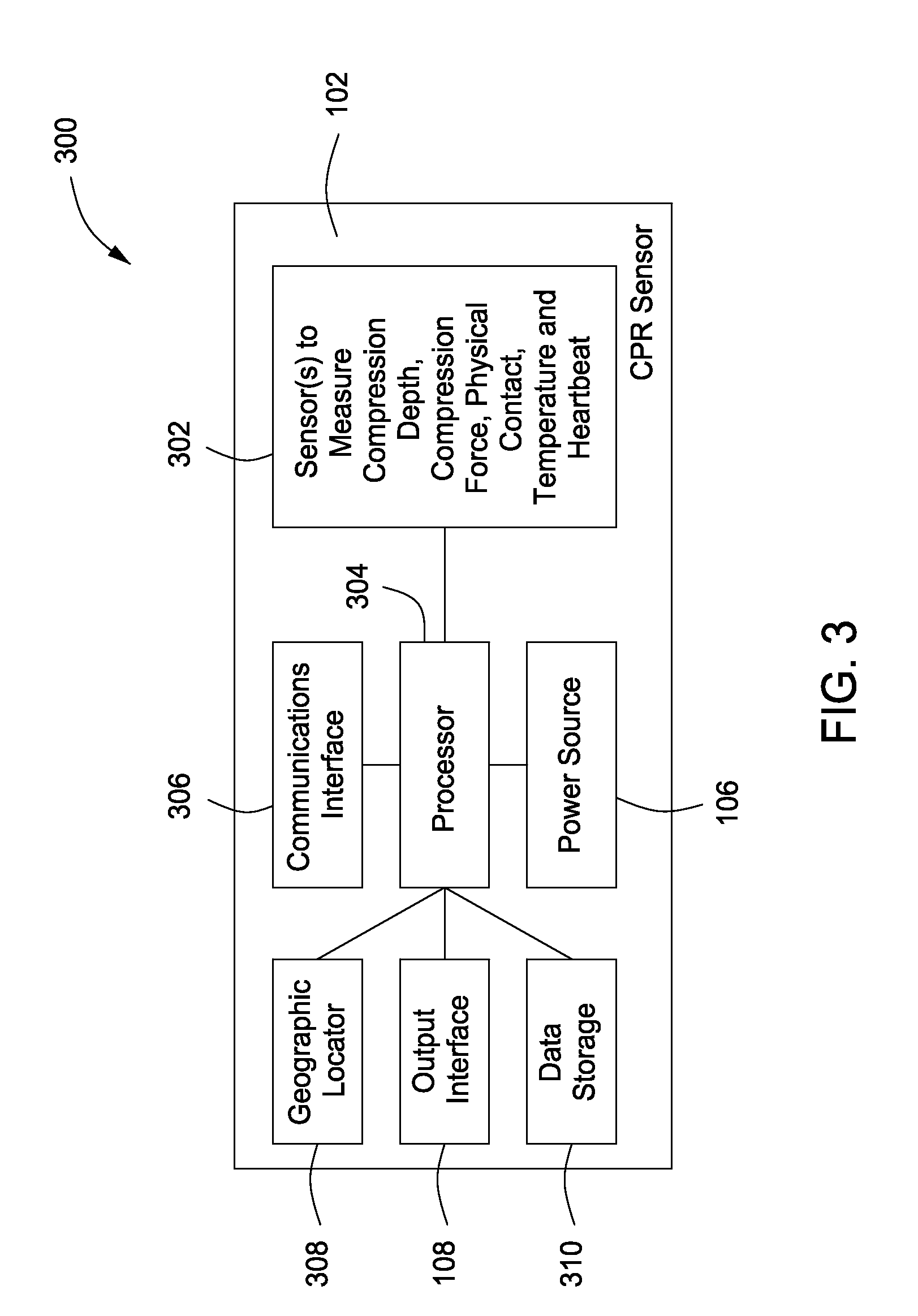Cardiopulmonary Resuscitation Sensor
a heart pump and sensor technology, applied in the field of sensors, can solve the problems of lack of feedback to lay first responders or professional resuscitation doctors, inadequate chest compression delivery by hand by lay responders, etc., and achieve the effects of convenient portability, self-power, and convenient portability
- Summary
- Abstract
- Description
- Claims
- Application Information
AI Technical Summary
Benefits of technology
Problems solved by technology
Method used
Image
Examples
first embodiment
[0029]Now referring to FIG. 1, a block diagram of a CPR sensor 100 in accordance with first embodiment of the present invention is shown. The CPR sensor 100 includes a thin and substantially flat flexible substrate 102 having one or more sensor arrays 104, a power source 106 and an output interface 108, all of which are disposed on the substantially flat flexible substrate 102. The substrate 102 can be any shape (e.g., rectangular, circular, a polygon, an irregular shape that is decorative) and made from a polymer, metal film or other suitable material. Note that the substrate 102 can be rigid or semi-flexible instead of flexible. If the substrate 102 is flexible or semi-flexible, it should be able to be stretched, wrinkled or flexed without degradation of the sensors 104. The one or more sensor arrays 104 measure one or more compression characteristics (e.g., depth, force, frequency, acceleration, etc.). The sensor array 104 and output interface 108 are connected to the power sourc...
second embodiment
[0035]Now referring to FIG. 3, a block diagram of a CPR sensor 300 in accordance with the present invention is shown. The CPR sensor 300 includes a thin and substantially flat flexible substrate 102 having one or more sensor arrays 302, a processor or analog circuit 304, a power source 106, a communications interface 306, a geographic locator 308, an output interface 108 and a data storage 310, all of which are disposed on the substantially flat flexible substrate 102. The substrate 102 can be any shape (e.g., rectangular, circular, a polygon, an irregular shape that is decorative) and made from a polymer, metal film or other suitable material. Note that the substrate 102 can be rigid or semi-flexible instead of flexible. If the substrate 102 is flexible or semi-flexible, it should be able to be stretched, wrinkled or flexed without degradation of the sensors 302. The geographic locator can be a GPS receiver, wireless communications device or other wireless location device. A protec...
third embodiment
[0040]Referring now to FIG. 4, an exploded view of a CPR sensor 400 in accordance with the present invention is shown. The CPR sensor 400 includes an upper protective layer 402, a lower protective layer 404, a thin and substantially flat flexible substrate 406 and an energy producing layer 408 (e.g., a layer of piezoelectric film or other means for energy harvesting during compressions). The substrate 406 can be any shape (e.g., rectangular, circular, a polygon, an irregular shape that is decorative) and made from a polymer, metal film or other suitable material. The thin and substantially flat flexible substrate 406 and an energy producing layer 408 are both disposed between the upper protective layer 402 and the lower protective layer 404. The upper protective layer 402 and lower protective layer 404 are semi rigid plastic films, but other materials can also be used. Upper protective layer can also be made of a transparent or semi-transparent material. If the upper protective laye...
PUM
 Login to View More
Login to View More Abstract
Description
Claims
Application Information
 Login to View More
Login to View More - R&D
- Intellectual Property
- Life Sciences
- Materials
- Tech Scout
- Unparalleled Data Quality
- Higher Quality Content
- 60% Fewer Hallucinations
Browse by: Latest US Patents, China's latest patents, Technical Efficacy Thesaurus, Application Domain, Technology Topic, Popular Technical Reports.
© 2025 PatSnap. All rights reserved.Legal|Privacy policy|Modern Slavery Act Transparency Statement|Sitemap|About US| Contact US: help@patsnap.com



